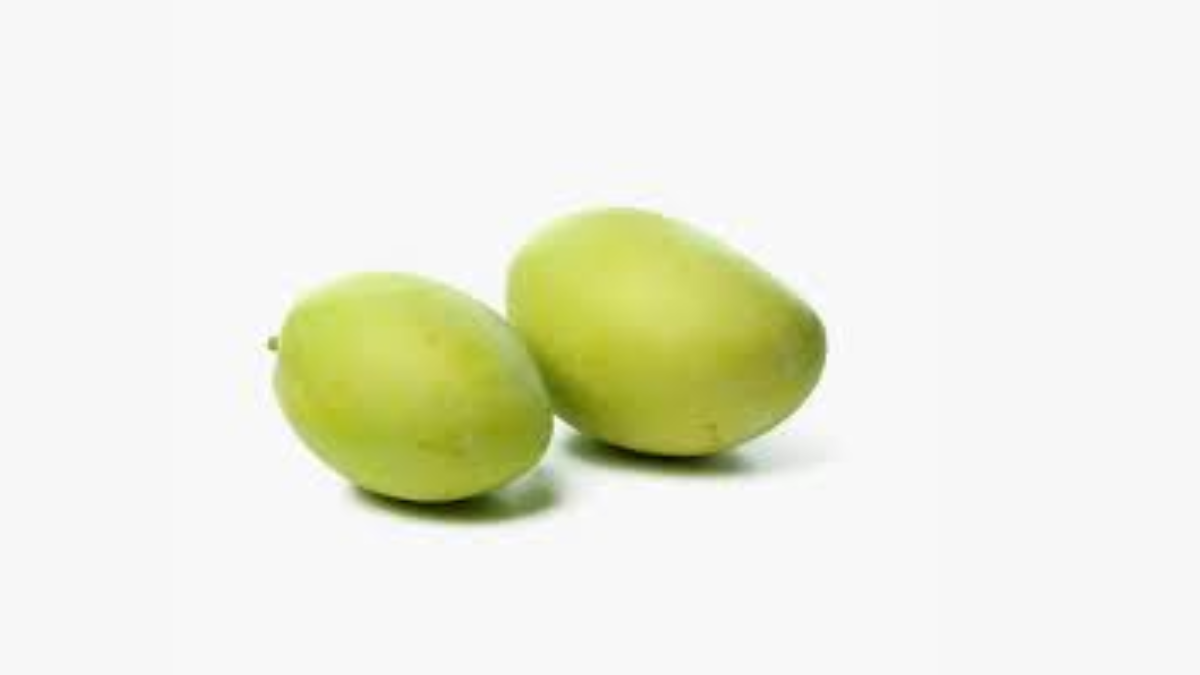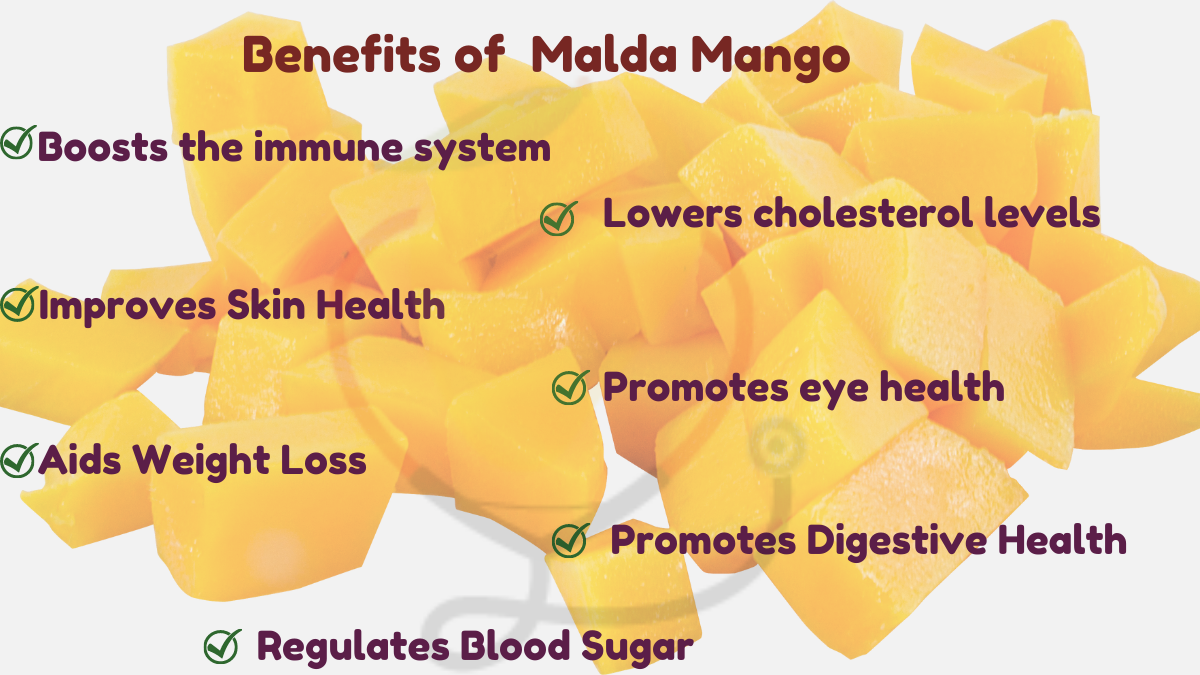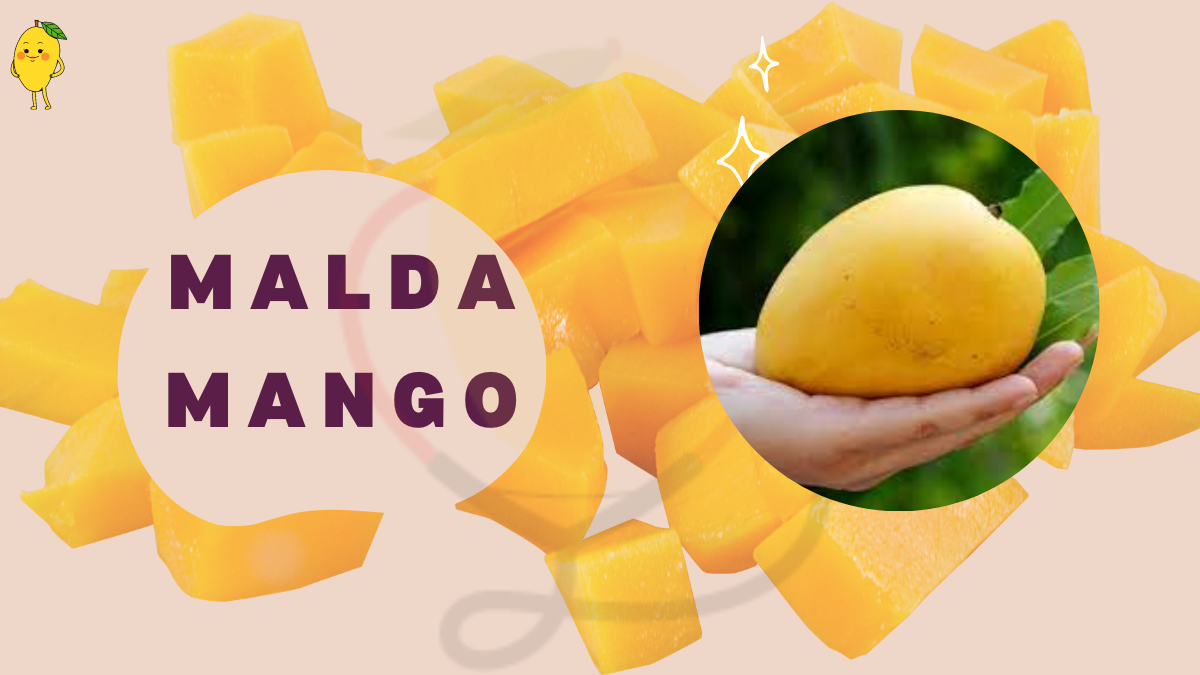Malda mangoes are initially characterized by a delightful blend of tanginess and sweetness, but as they ripen, they transform into soft and delicious fruit. [1]
It is also known for its exceptional taste and aroma, the Malda mango is a pride of the Malda district of West Bengal, India.
In this article, we will take a closer look at this delectable fruit, its origins, characteristics, and nutritional benefits.

Origin of Malda Mango
The Malda mango has its origins in the Malda district of West Bengal, which is located in the eastern part of India.
The district is known for its fertile soil, favorable climate, and abundant water resources, making it an ideal place for mango cultivation.
The Malda mango is believed to have been first cultivated in the mid-18th century and has since become one of the most popular varieties of mangoes grown in India.
Characteristics of Malda Mango
Malda mango is known for its distinct characteristics, which make it a popular choice among mango lovers.
Here are some of the characteristics of Malda mango.
Shape and size: Malda mangoes are generally medium to large in size, with an oval or oblong shape. The fruit is slightly flattened at the top and bottom, with a distinct beak at the tip.
Skin: The skin of Malda mango is thin and smooth, with a bright yellow or golden color. The skin may also have reddish or orange hues, depending on the ripeness of the fruit.
Flesh: The flesh of Malda mango is juicy and tender, with a sweet and aromatic flavor. The fruit has a creamy texture, which is not too fibrous or stringy.
Aroma: Malda mango is known for its intense and pleasant aroma, which can be detected even from a distance. The aroma is a key indicator of the fruit’s ripeness and quality.
Shelf life: Malda mango has a relatively short shelf life, typically lasting for 3-5 days at room temperature. However, the fruit can be stored for longer periods in a refrigerator or by using appropriate preservation techniques.
Season: Malda mango is a seasonal fruit, with the harvesting season typically starting from late May and lasting until July. The fruit is widely available in local markets and supermarkets during this period.
Varieties of Malda Mango
The Malda mango has several varieties, with each having its unique taste and characteristics. Some of the popular varieties of Malda mango include Himsagar, Lakshmanbhog, Amrapali, and Mallika.
The Himsagar mango is considered the best variety of Malda mango, known for its exceptional taste and aroma.
Nutritional Values of Malda Mango
Malda mango is not only delicious but also packed with essential nutrients that are beneficial for our health. [2]
Here are some of the key nutritional values of Malda mango per 100 grams.
- Calories: 65
- Carbohydrates: 17 g
- Protein: 0.5 g
- Fat: 0.3 g
- Fiber: 1.8 g
- Vitamin C: 27% of the Daily Value (DV)
- Vitamin A: 10% of the DV
- Folate: 5% of the DV
- Potassium: 3% of the DV
- Calcium: 1% of the DV
- Iron: 1% of the DV
Health benefits of Malda mango
Malda mango not only tastes great but also offers numerous health benefits.
Here are some of the health benefits of consuming Malda mango.

1: Boosts Immunity
Malda mango is a good source of vitamin C, which plays a crucial role in boosting the immune system. [3]
Regular consumption of Malda mango can help protect against various infections and illnesses.
2: Promotes Digestive Health
Malda mango contains dietary fiber, [4] which promotes digestive health by aiding in digestion and preventing constipation.
It also contains digestive enzymes that help break down complex proteins and improve digestion.
3: Lowers Cholesterol
Malda mango contains high levels of pectin, a soluble fiber that helps lower cholesterol levels in the blood. This can help reduce the risk of heart disease and other cardiovascular problems. [5]
4: Supports Eye Health
Malda mango is rich in vitamin A, [6] which is essential for maintaining good vision and preventing age-related macular degeneration.
5: Improves Skin Health
Malda mango is a good source of antioxidants [7] such as beta-carotene and vitamin C, which help protect the skin from damage caused by free radicals.
These antioxidants also help promote collagen production, which can improve skin elasticity and reduce the appearance of wrinkles.
6: Aids Weight Loss
Malda mango is low in calories and high in fiber, making it a great food choice for those looking to lose weight. The fiber in Malda mango helps promote satiety and prevent overeating. [8]
7: Regulates Blood Sugar
Malda mango contains natural sugars that are slowly released into the bloodstream, which helps regulate blood sugar levels. [9]
This is beneficial for people with diabetes or those at risk of developing diabetes.
Culinary Uses of Malda Mango
Malda mango is a versatile fruit that can be used in a variety of culinary applications.
Here are some of the popular culinary uses of Malda mango:
Mango chutney: Mango chutney is a sweet and spicy condiment made by cooking mangoes with sugar, vinegar, and spices.
Mango salsa: Mango salsa is a refreshing and colorful dip made with diced mangoes, onion, tomato, cilantro, and lime juice.
Mango lassi: Mango lassi is a popular Indian drink made by blending mango pulp with yogurt, milk, sugar, and spices.
Mango ice cream: Mango ice cream is a delicious frozen dessert made with pureed mangoes, cream, and sugar.
Mango smoothie: Mango smoothie is a refreshing and healthy drink made by blending mangoes with yogurt, milk, and honey.
Mango desserts: Malda mango is a popular ingredient for making various desserts, such as mango cheesecake, mango mousse, and mango pudding.
Importance of Malda Mango in Indian Culture
Mangoes have been an integral part of Indian culture for centuries and are often associated with summer and the monsoon season. The Malda mango, in particular, holds a special place in the culture of West Bengal.
It is considered a delicacy and is often given as a gift during special occasions, such as weddings and festivals. The Himsagar mango, in particular, is highly prized and is known as the “royal mango” of Bengal.
Popular Recipes
Here are some delicious and easy-to-make recipes using Malda mango.

- Mango Salsa Recipe
- Mango Lassi Recipe
- Mango Chutney Recipe
The Malda mango is a delicious and nutritious fruit that is highly prized in India. Its exceptional taste, delicate texture, and unique aroma make it a favorite among mango lovers.
The Malda mango is not only an essential part of the culture of West Bengal but also an important source of livelihood for mango farmers.
Efforts must be made to ensure the sustainability of Malda mango cultivation and promote its rich cultural heritage.
FAQs
Can Malda mangoes be eaten by people with diabetes?
Mangoes, including Malda mangoes, contain natural sugars and should be consumed in moderation by people with diabetes.
What is the best way to enjoy Malda mangoes?
Malda mangoes can be enjoyed in many ways, such as eating them raw, making desserts, or using them in various culinary preparations.
Can Malda mangoes be exported?
Yes, Malda mangoes can be exported to other countries, subject to government regulations and certifications. The export of Malda mangoes can be a significant source of income for mango farmers in West Bengal.

